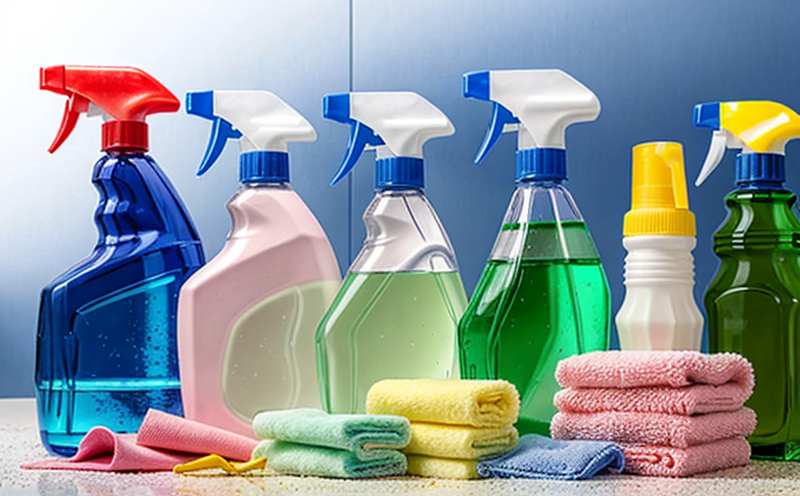Rinsability Testing in Cleaning Products
Rinsability testing is a critical component of product safety and quality assurance, especially for cleaning products. This test evaluates the extent to which residues remain after rinsing, ensuring that the product does not leave harmful or unsightly deposits on surfaces.
The importance of this testing cannot be overstated, particularly in sectors like healthcare, hospitality, and domestic households where hygiene is paramount. Residues from cleaning products can lead to a variety of issues, including:
- Increased risk of contamination
- Potential dermatological irritation
- Harmful environmental impact if not rinsed properly
The primary objective of rinsability testing is to ensure that the product performs as intended, leaving no harmful residues behind. This process involves several steps:
- Application of the cleaning agent according to specified guidelines.
- Rinsing with water or a designated rinse solution.
- Measurement and analysis of residual levels post-rinsing.
The testing apparatus used includes precision scales, pH meters, and spectrophotometers. The results are then compared against international standards such as ISO 15476 for household cleaning products or ASTM D8392-20 for industrial cleaners. Compliance with these standards is essential to ensure product safety and effectiveness.
A notable aspect of rinsability testing is its role in environmental sustainability. By minimizing rinse water usage, manufacturers can reduce water consumption, which contributes positively to the environment. Additionally, products that pass rigorous rinsability tests are less likely to contribute to microplastic pollution or other harmful substances in aquatic environments.
Industry Applications
| Type of Cleaning Product | Rinsability Test Application |
|---|---|
| Disinfectants | Evaluates the extent to which residues can inhibit further disinfection. |
| Powdered Cleaners | Determines how well powders disperse and rinse away completely. |
| Laundry Detergents | Makes sure that detergent particles are not left on fabrics after rinsing. |
Rinsability testing is crucial across various industries. For instance, in the healthcare sector, it ensures patient safety by reducing the risk of cross-contamination. In hospitality, it enhances guest satisfaction and cleanliness standards. The automotive industry also benefits from rigorous rinsability tests to ensure that vehicles can be properly cleaned without leaving residues.
Environmental and Sustainability Contributions
The environmental impact of cleaning products is a growing concern, and rinsability testing plays an essential role in addressing this issue. By minimizing the amount of rinse water needed to achieve clean results, manufacturers can significantly reduce their ecological footprint.
In addition to reducing water usage, properly rinsable cleaning products help prevent pollution. Residues that are not fully rinsed away can accumulate in bodies of water, where they may harm aquatic life or contribute to eutrophication. Rinsability testing ensures that these risks are minimized, promoting a more sustainable approach to product development and use.
Manufacturers who prioritize rinsability testing also stand to gain from enhanced brand reputation and consumer trust. Consumers increasingly seek eco-friendly products, and those that pass rigorous rinsability tests can position themselves as leaders in sustainability.
Competitive Advantage and Market Impact
- Promotes brand reputation by demonstrating commitment to consumer safety and environmental stewardship.
- Ensures compliance with international standards, enhancing market access in global markets.
- Increases customer satisfaction through the delivery of effective and safe products.
- Reduces waste and operational costs associated with ineffective rinsing processes.
The competitive advantage gained from rigorous rinsability testing can be significant. Companies that invest in this testing not only meet regulatory requirements but also position themselves as leaders in product safety and environmental responsibility. This approach can lead to increased market share, improved customer loyalty, and a stronger brand identity.





